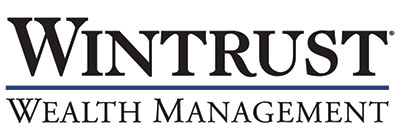Data tokens on this page
Financial Solutions
Financial Solutions
Four Strategies for an Organized Tax Season
Has tax season become a frustrating paper chase? These tactics can buy you some relief.
As is the case almost every year, tax day—April 15 in 2020—is apt to sneak up in a hurry. Whether you use tax-preparation software or outsource your tax prep to a CPA, here are some key strategies to ensure a smooth and worry-free tax season.
Strategy 1: Use a tax checklist or organizer
Using some type of a tax checklist or organizer can help you avoid that paper chase and assemble all of the key documents you need in advance; completing your return is then a matter of filling in data. Tax checklists abound online.
If you outsource your tax preparation to an accountant, it is a good bet he or she sends you a tax organizer to work from, either paper or digital; such forms often come prepopulated with your tax data from the previous year. Comparing the current tax year’s numbers to those of the year prior can be a handy way to track trends in your income, interest earned on your investments, and charitable giving, among other items.
Strategy 2: Determine if you will be itemizing or taking the standard deduction
A key next step in gearing up is to determine whether you will be itemizing your deductions or taking the standard deduction.
If you employ a tax advisor to help with your tax return, he or she may have provided some guidance on this issue based on your previous return. If you do your taxes on your own, you can probably get a pretty clear view of whether you will itemize or use the standard deduction by taking stock of the major deductible items. For 2020, your itemized deductions would need to be greater than $12,400 for single taxpayers and $24,800 for married couples filing jointly for itemizing to be worthwhile.
For most households, the biggest-ticket deductible items include state and local taxes (including property taxes), which are now capped at $10,000 per household; charitable deductions; home mortgage interest (note the changes in the rules that went into effect in 2018); and medical expenditures in excess of 7.5 percent of adjusted gross income.
Armed with information about whether you will itemize or claim the standard deduction, you can then know whether you need to round up supporting documentation. If you are claiming the standard deduction, you will not need to bother, but if you are itemizing, you will.
If you are aiming to find documentation of your deductible expenses but can not track down all of the receipts you need, do not despair. The previous year’s credit card statements, which you can retrieve online, can help you identify expenses you incurred over the past year; if your credit card company prepares an annual accounting of your expenditures organized by category, that can provide an invaluable tool to your deductible expenses. Healthcare providers and pharmacies are also usually happy to prepare a year-end statement documenting your out-of-pocket outlays over the previous year.
Strategy 3: Round up your investment documentation
Around this time of year, W-2s and 1099s, which report various types of income you may have received, will soon be arriving. Bear in mind, however, that the deadline for sending out 1099s is a bit later than other forms you might receive, like W-2s; it is mid-February and even later for some investment providers. If you want to get a jump on your taxes but still do not have all of the documents you need, you may be able to get the information you seek by hopping online with your investment providers; firms typically maintain “tax centers” where you can download and/or print out the relevant forms, including 1099s that have not yet arrived or that you have mislaid. Do not just stuff your 1099s in a folder; also take a moment to see if you can learn anything that might help you improve your portfolio.
Strategy 4: Knock off your contributions as soon as possible
Your deadline for contributing to an IRA or health savings account is the same as your tax-filing deadline. But that does not mean you need to wait until you get your taxes in to tackle those tasks. In fact, if you want to deduct your health savings account or IRA contribution on your tax return, you will need to make that contribution before you file your return. Ditto if you are taking advantage of the Saver’s Credit. Note that these deductions are available to you whether you itemize your deductions or not.
Even if you are not deducting your contribution (you are making a Roth IRA contribution, for example), there is an opportunity cost to waiting until the last minute to make these contributions. And those opportunity costs can add up if you are a serial procrastinator. Assuming you invest in something that goes up more often than it goes down, you will lower your return by waiting until your tax-filing deadline each year.
Of course, from a practical standpoint, some investors wait to make those contributions because they want to see what their tax bills are first. If that describes your situation, consider signing on for an automatic-investment program for your future IRA contributions so you are not at the mercy of your tax bill each year. For the 2020 tax year, investors under age 50 can hit their full $6,000 maximum IRA contribution by putting in an even $500 a month; those over 50 can max out with a $583.22 monthly contribution.
© Morningstar 2020. All Rights Reserved. Used with permission.
Start the Conversation
Where will your financial journey take you? A Financial Advisor helps you navigate the terrain, avoid pitfalls, and keep you on track to achieve your financial goals.

